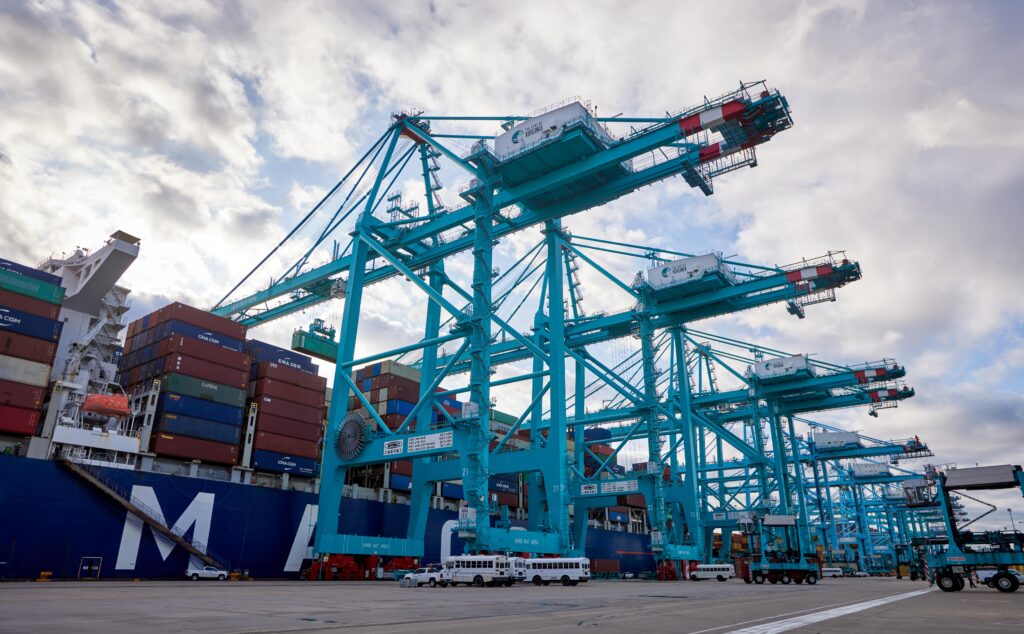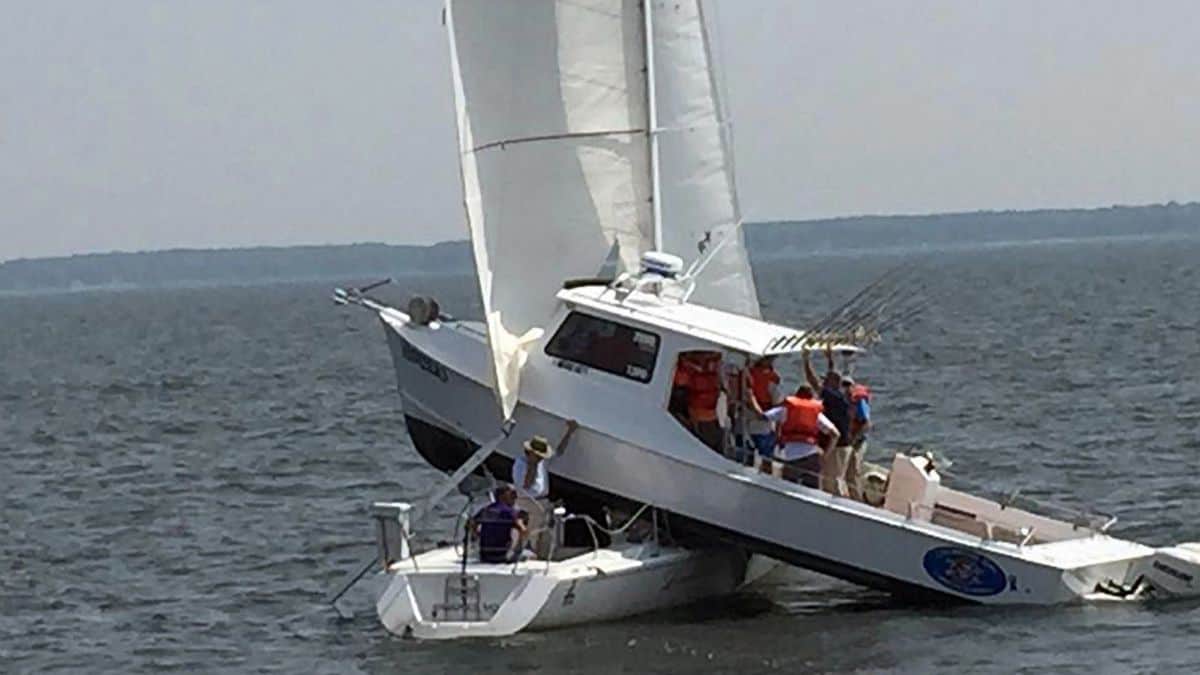The Port of Virginia is stepping up its game when it comes to handling container ships. With the addition of four new ship-to-shore cranes, the port is now able to serve three Ultra-Large Container Vessels (ULCV) at the same time.
The four new, all-electric, Suez-class cranes allow the port to create a third ULCV berth at the Virginia International Gateway. The port now has a total of 26 ship-to-shore cranes capable of handling the biggest container vessels on the Atlantic Ocean. Port leaders are planning even more expansion by 2027. “Today we offer three ULCV berths and we are quickly heading toward having the capacity to handle five ultra-large container vessels at once,” says Stephen A. Edwards, CEO and executive director of the Virginia Port Authority.
“You have to have modern assets to accommodate modern ships (ULCVs),” Port of Virginia spokesman Joe Harris tells Chesapeake Bay Magazine. You also have to have sufficient depth for the world’s largest ships to access your port, and Virginia is working on that, too. The shipping channels and Norfolk Harbor are being dredged to 55 feet deep, which would make Virginia the deepest port on the U.S. East Coast.
“We already have channels wide enough to handle two-way ULCV traffic and we are in the last phase of deepening,” Edwards says. “When the dredge work is complete, multiple ULCVs, loaded to their absolute limits, will be able to call The Port of Virginia without restrictions at the berth, on water depth or for vessel traffic.”
Ship sizes continue to increase as the Chesapeake Bay region’s ports take steps to modernize and plan for the future. Several East Coast ports have focused on ULCV capabilities in recent years, and the Port of Baltimore has two such berths.
In the end, for Virginia it’s all about turnaround time for the shipping companies who call on the port. Harris says, “The ULCV berth capacity, the wider and deeper channel means we can turn, or process, the ships faster than ever; there will not be any wait time for a berth at The Port of Virginia.”




